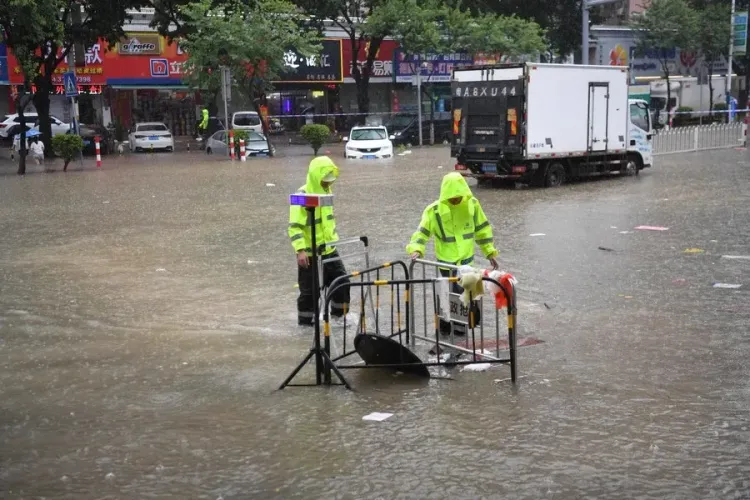Why Has China Renewed Its Yellow Alert for Rainstorms?

Synopsis
Key Takeaways
- Yellow alert renewed for rainstorms.
- Heavy rain expected across multiple provinces.
- Precautionary measures advised by authorities.
- Potential flooding in key river regions.
- Real-time monitoring of conditions is crucial.
Beijing, Aug 10 (NationPress) China's national observatory has once again issued a yellow alert for rainstorms on Sunday, signaling the potential for substantial downpours in various regions across the nation.
From 8:00 a.m. Sunday to 8:00 a.m. Monday, significant rainfall and rainstorms are anticipated to impact parts of Jiangsu, Shanghai, Anhui, Henan, Hubei, Hunan, Guizhou, Yunnan, Sichuan, Chongqing, Shaanxi, Inner Mongolia, and Heilongjiang, according to the National Meteorological Centre.
Areas within Jiangsu, Anhui, Hubei, Sichuan, Guizhou, and Yunnan are predicted to face torrential rain, with rainfall amounts reaching as high as 230 mm, the center reported.
Some of these areas may experience brief yet intense rainfall, with maximum hourly precipitation possibly exceeding 80 mm, along with thunderstorms and strong winds, as per Xinhua news agency.
The center has advised local authorities to take necessary precautions against heavy rainstorms and to implement effective drainage measures in urban settings and on agricultural lands.
China employs a four-tier color-coded weather warning system, with red indicating the most severe conditions, followed by orange, yellow, and blue.
On Saturday, China's Ministry of Water Resources activated a Level IV flood-control emergency response for five provincial-level regions, anticipating that heavy to torrential rains will affect extensive areas of the country in the upcoming days.
From August 9 to 11, severe rainfall is expected to hit Henan, Hubei, Chongqing, Sichuan, Shaanxi, Anhui, and Gansu, where alerts are already in effect, with certain regions facing extreme downpours.
These heavy rains could result in significant water level rises in the upper and middle reaches of the Yangtze and Huaihe Rivers, while smaller to medium-sized rivers in high-risk zones might exceed warning levels.
The ministry has urged local authorities to enhance real-time monitoring of rainfall and river conditions, promptly issue public alerts, and strengthen measures to prevent urban waterlogging.
Special attention should be given to mitigating risks in smaller rivers and ensuring timely evacuations of residents from hazardous areas, according to the ministry.








